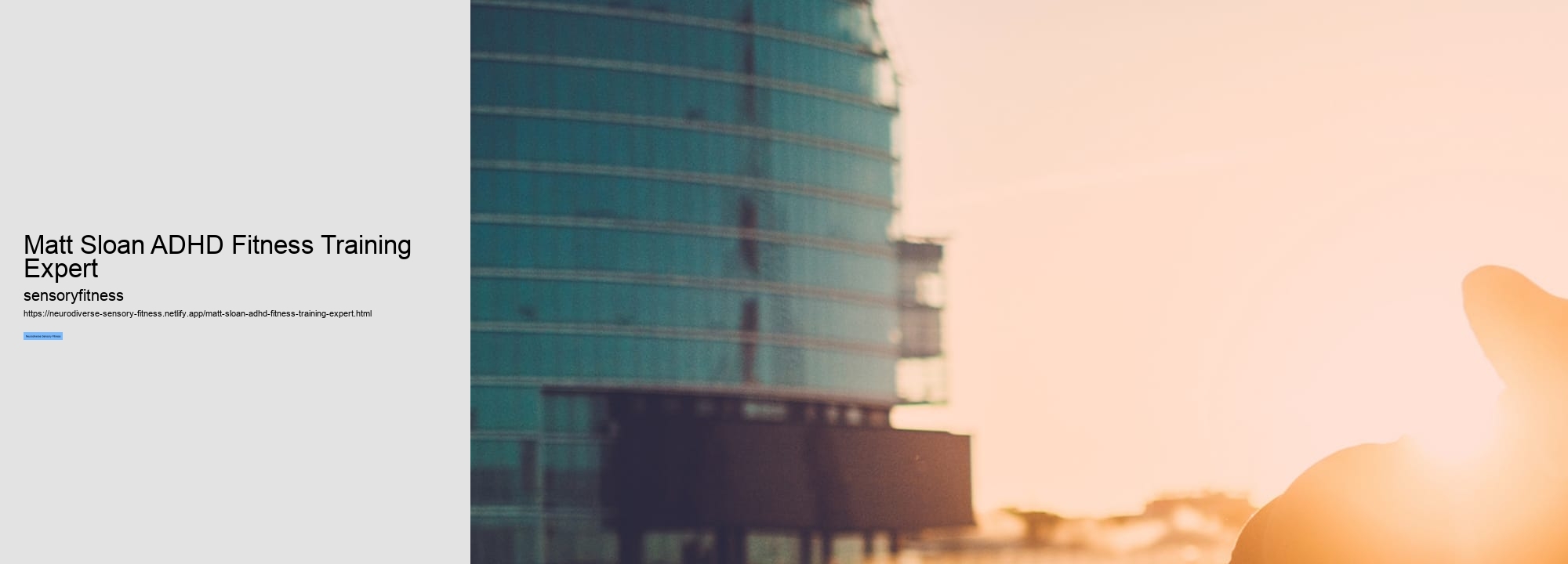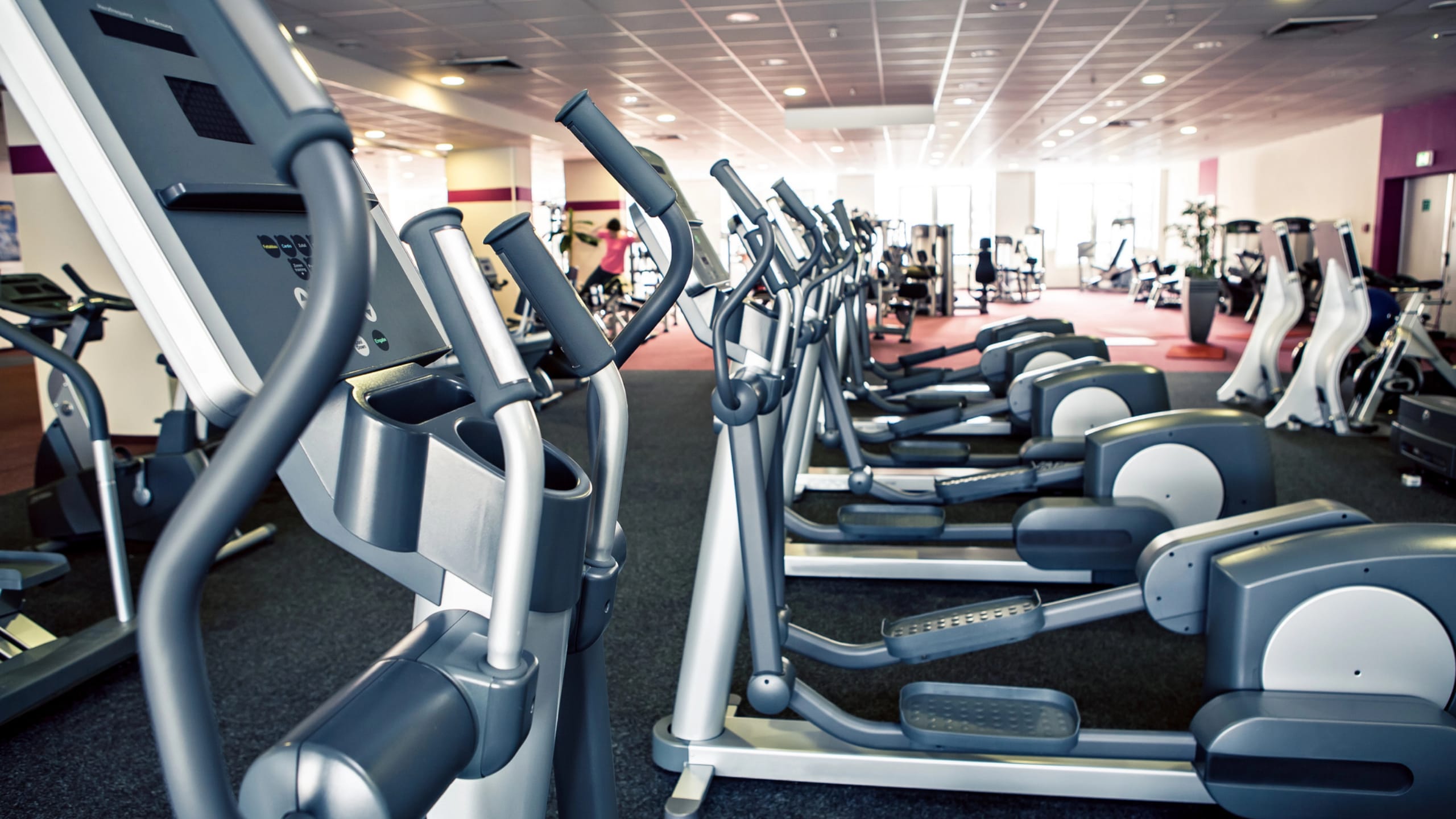

Another crucial component of a neurodiverse sensory fitness program is individualized support and accommodations for participants with different sensory needs. This may involve providing alternative equipment or modified exercises to accommodate specific challenges or preferences. For example, individuals who are sensitive to loud noises may benefit from using noise-canceling headphones during group workouts. In addition, creating a safe and supportive space for participants is essential in a neurodiverse sensory fitness program.
Encouraging open communication and offering flexibility in programming can also contribute to a positive experience for everyone involved. Overall, the key components of a neurodiverse sensory fitness program focus on creating an inclusive and engaging workout experience for individuals with diverse neurological abilities. By incorporating sensory stimuli, providing individualized support, and fostering a supportive environment, these programs can help promote physical health and well-being for all participants regardless of their unique needs or challenges.
Neurodiverse sensory fitness refers to the ability of individuals with neurodiverse conditions, such as autism or ADHD, to effectively process sensory information and regulate their responses to stimuli. This type of fitness plays a crucial role in supporting cognitive function and daily living skills for individuals with neurodiverse conditions. One significant impact that neurodiverse sensory fitness has on cognitive function is improved focus and attention.
By developing sensory fitness through activities like deep pressure therapy or sensory integration exercises, individuals can learn how to better regulate their responses to sensory input and improve their ability to focus on tasks. Additionally, neurodiverse sensory fitness can also enhance processing speed and coordination, which are essential components of cognitive function. By engaging in activities that challenge the senses, such as balancing exercises or proprioceptive activities, individuals can strengthen neural pathways in the brain that support these functions.
This can lead to improvements in information processing, decision-making, and motor skills. In terms of daily living skills, neurodiverse sensory fitness can have a profound impact on an individual's ability to navigate their environment and perform everyday tasks. For example, individuals who struggle with sensory sensitivities may find it challenging to tolerate certain textures or sounds in their surroundings. By engaging in activities that desensitize the senses or provide alternative forms of stimulation, individuals can become more adaptable and resilient in different environments.
Individuals who are able to effectively regulate their responses to sensory input are better equipped to manage stress, anxiety, and other emotional challenges that may arise throughout the day. This can lead to greater confidence, independence, and overall well-being in daily life. In conclusion, neurodiverse sensory fitness plays a critical role in supporting cognitive function and daily living skills for individuals with neurodiverse conditions.
How to create a sensory-friendly fitness routine for neurodiverse individualsCreating a sensory-friendly fitness routine for neurodiverse individuals requires a thoughtful and inclusive approach that takes into consideration their unique needs and preferences. By understanding the specific sensory sensitivities and challenges faced by individuals with conditions such as autism, ADHD, or sensory processing disorder, we can tailor our fitness routines to provide a positive and supportive environment for everyone to thrive. One important aspect to consider when designing a sensory-friendly fitness routine is the environment in which the activities take place.
Additionally, it can be helpful to incorporate visual cues such as pictures or diagrams to help guide individuals through each exercise. When it comes to choosing exercises for neurodiverse individuals, it is essential to focus on activities that are engaging, varied, and adaptable to different skill levels. For example, incorporating activities that involve rhythmic movements or deep pressure input can help individuals regulate their sensory systems and feel more grounded during exercise.
Additionally, offering options for both individual and group activities can cater to different preferences and comfort levels. Another key consideration when creating a sensory-friendly fitness routine is providing clear instructions and support throughout the session. Using simple language, breaking down tasks into manageable steps, and offering encouragement and reinforcement can help individuals feel confident in their abilities and stay motivated throughout the workout. It is also important to allow for breaks as needed and respect individual boundaries when it comes to physical contact or personal space.
By taking the time to understand each individual's unique needs and preferences, we can design an inclusive environment where everyone feels welcome and supported in their journey towards better health and well-being. Through patience, communication, and collaboration with professionals who specialize in working with neurodiverse populations, we can create a safe space where all individuals can thrive physically, mentally, emotionally while enjoying the benefits of regular physical activity. How to incorporate sensory activities into your workout for neurodiverse individualsWhen it comes to incorporating sensory activities into workouts for neurodiverse individuals, there are many strategies that can be utilized to enhance the overall exercise experience.
One way to incorporate sensory activities into workouts is by utilizing different textures and materials. For example, using textured mats or equipment can provide tactile stimulation while exercising. This can help individuals with sensory processing issues feel more grounded and engaged in their workout.
Music has been shown to have a powerful impact on mood and motivation during exercise. Neurodiverse individuals may benefit from choosing music that is calming or energizing based on their individual preferences. Visual stimuli can also play a key role in enhancing sensory experiences during workouts.


Incorporating colorful visuals or patterns into the workout space can help individuals stay focused and engaged throughout their exercise routine. In addition to these sensory strategies, mindfulness techniques such as deep breathing exercises or guided imagery can be helpful for promoting relaxation and reducing stress during physical activity. These techniques can help neurodiverse individuals stay present and connected to their bodies while exercising.
By utilizing a variety of sensory strategies such as textures, music, visuals, and mindfulness techniques, individuals can create a more personalized and engaging workout routine that meets their unique needs. How to tailor fitness programs to accommodate different sensory needs in neurodiverse individualsWhen it comes to creating fitness programs for neurodiverse individuals, it is important to consider their unique sensory needs.
By tailoring fitness programs to accommodate these sensory needs, we can create an inclusive and supportive environment that promotes physical health and well-being. One key consideration when designing fitness programs for neurodiverse individuals is to provide options for different sensory preferences.
By offering a variety of equipment and exercises that cater to these preferences, we can ensure that everyone feels comfortable and engaged during their workout. In addition to sensory preferences, it is also important to consider individual differences in motor skills and coordination.
Some neurodiverse individuals may have challenges with balance or coordination, which can impact their ability to participate in certain types of exercises. By providing modifications or adaptations that address these challenges, we can help everyone access the benefits of physical activity. Another important aspect of accommodating sensory needs in neurodiverse individuals is creating a safe and predictable environment. This may involve setting clear expectations for behavior, providing visual schedules or cues, and offering opportunities for breaks or downtime as needed. By establishing a routine and structure that supports each individual's sensory needs, we can help them feel more comfortable and confident in their fitness program. Overall, tailoring fitness programs to accommodate different sensory needs in neurodiverse individuals requires creativity, flexibility, and empathy.
Through thoughtful planning and collaboration with professionals who specialize in neurodiversity, we can ensure that our fitness programs are truly accessible to all. How to use adaptive equipment to enhance sensory fitness for neurodiverse individualsAdaptive equipment can play a crucial role in enhancing sensory fitness for neurodiverse individuals. By utilizing specialized tools and devices, we can create a more inclusive environment that supports the unique sensory needs of those with conditions such as autism, ADHD, or sensory processing disorder. One key aspect of using adaptive equipment is to understand the specific sensory challenges faced by each individual. For example, some people may be hypersensitive to certain stimuli, while others may seek out additional sensory input to feel regulated.
There are many different types of adaptive equipment that can be used to enhance sensory fitness. Weighted blankets or vests, for instance, can provide deep pressure stimulation that helps calm an overstimulated nervous system. Fidget toys and chewable jewelry can offer oral sensory input for those who seek out opportunities for mouthing and chewing. Sensory swings or rocking chairs can provide vestibular input that promotes balance and coordination. When using adaptive equipment, it's important to introduce it gradually and allow individuals time to acclimate to the new sensations.
Consistency is key in building a routine that supports their sensory needs. Incorporating adaptive equipment into daily routines can help neurodiverse individuals regulate their senses and improve their overall well-being. Whether at home, school, or in community settings, providing access to these tools can empower individuals to better navigate their environment and engage in activities that bring them joy. By recognizing the importance of adaptive equipment in enhancing sensory fitness for neurodiverse individuals, we can create a more inclusive society where everyone has the support they need to thrive. Let's continue exploring innovative ways to utilize these tools and promote greater understanding and acceptance of neurodiversity.


How to make exercise more enjoyable and engaging for neurodiverse individuals through sensory integrationExercise is a crucial component of overall health and well-being for everyone, including neurodiverse individuals. However, for some people with sensory processing differences, traditional forms of exercise may not be as enjoyable or engaging. This can make it challenging to stay motivated and consistent with a fitness routine.
Sensory integration involves incorporating activities that stimulate the senses in order to improve focus, coordination, and overall physical wellness. By tailoring exercise routines to include sensory-rich experiences, individuals with sensory processing differences can better connect with their bodies and find pleasure in movement.
One approach is to use equipment and props that provide tactile or proprioceptive input, such as therapy balls, resistance bands, or textured surfaces. These tools can help individuals better regulate their sensory systems while engaging in physical activity.
This could involve playing music during workouts to enhance auditory stimulation, using scented oils or aromatherapy diffusers to create a calming atmosphere, or incorporating visual cues like colorful markers or lights to increase visual engagement. In addition to adding sensory-rich experiences to workouts, it's important to consider individual preferences and sensitivities when designing exercise routines for neurodiverse individuals.
Some people may have a heightened sensitivity to certain stimuli, while others may seek out intense sensations. By taking these factors into account and providing options for customization, you can help create a more inclusive and enjoyable fitness experience. Overall, the key to making exercise more enjoyable and engaging for neurodiverse individuals through sensory integration is to prioritize individual needs and preferences.
The Benefits of Neurodiverse Sensory Fitness ProgramsNeurodiverse sensory fitness programs offer a multitude of benefits for individuals of all abilities. These programs are designed to cater to the unique sensory needs of each participant, no matter their neurology.
One of the primary benefits of neurodiverse sensory fitness programs is the promotion of overall health and wellness. Engaging in regular physical activity has been shown to improve cardiovascular health, strengthen muscles, and increase flexibility.
Furthermore, these programs can also help individuals regulate their emotions and reduce stress levels. Many people with neurodivergent conditions such as autism or ADHD have difficulty processing sensory information, which can lead to feelings of overwhelm or anxiety.
Increased awareness, improved diagnostic criteria, and broader understanding of autism spectrum disorders have contributed to more frequent identification of autistic individuals in recent years.
If you suspect you may be autistic, seeking an evaluation from a qualified professional such as a psychologist or psychiatrist can provide clarity and guidance.
Fitness is crucial for overall health and well-being as it helps improve physical strength, endurance, cardiovascular health, mental health, and quality of life.
Autism and ADHD can share overlapping symptoms, so it's essential to consult with a healthcare professional for a comprehensive evaluation to determine the most accurate diagnosis.